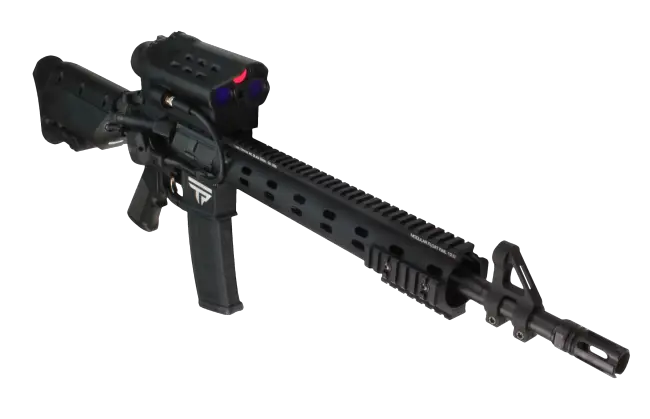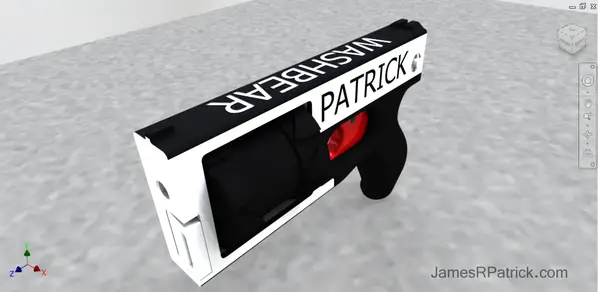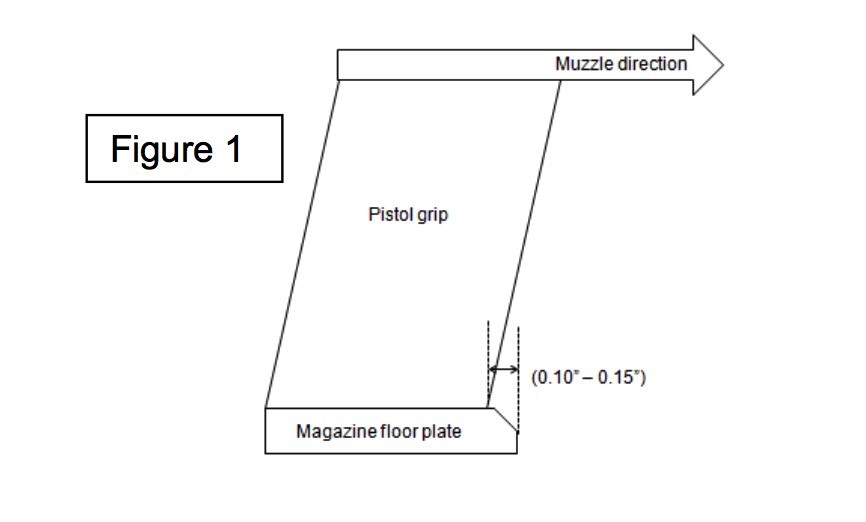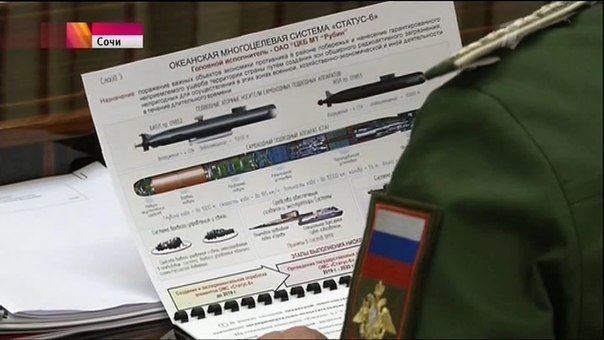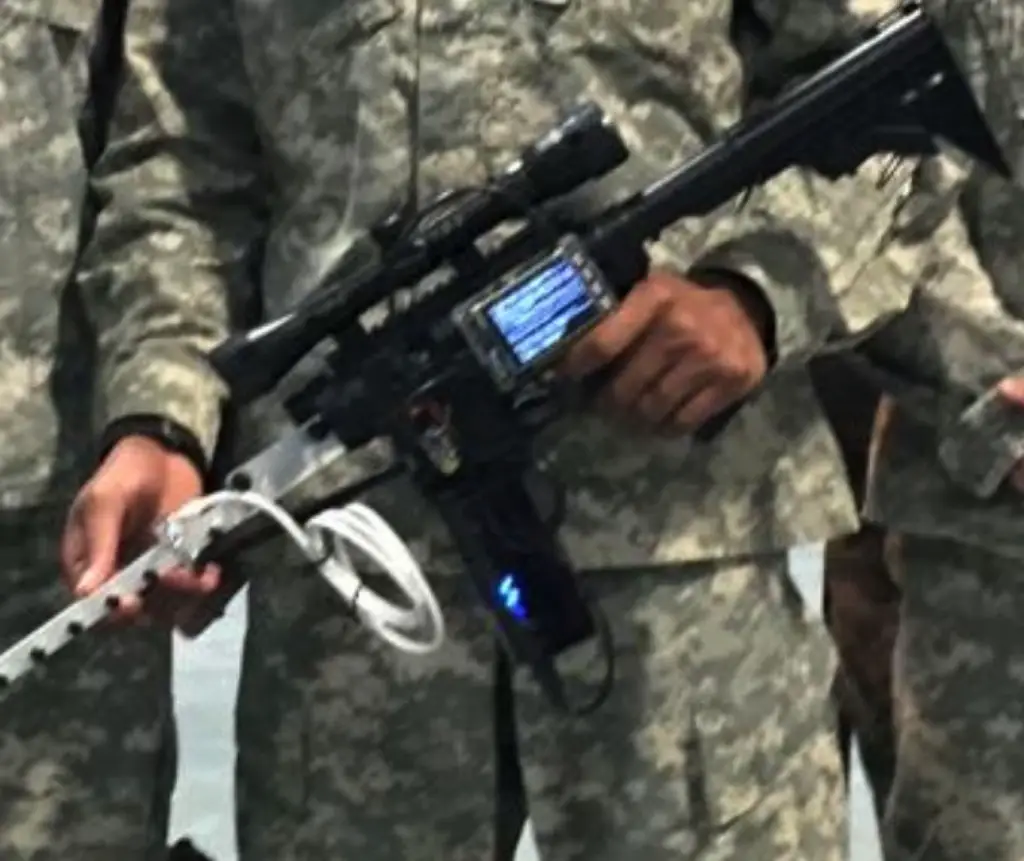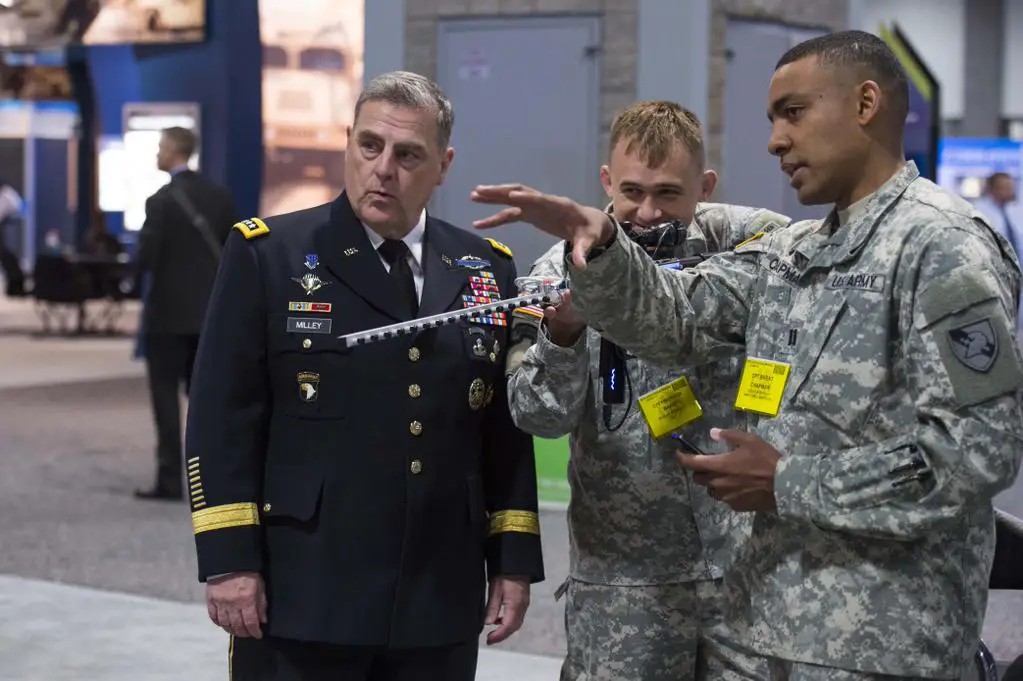They’re positioning the new Tracking Point NightHawk as a Homestead Defense gun, but we’re seeing the king of all hog harvesters.
This latest iteration of TP tech is supposed to list at a that’s-what-my-truck-cost $15.5k or so, but they’re jump-starting sales by selling the first 100 for $6995. Tracking Point writes:
The… NightHawk .300 Blackout. Designed for homestead defense, NightHawk has a fully integrated night vision capability and is offered at an introductory price of $6995 for the first 100 purchases – the lowest price ever offered for a Precision-Guided Firearm.
To us, the NightHawk seems like a slightly-decontented .300 version of their 5.56 M600 SR service rifle. Unlike the M600, the NightHawk is limited to engaging targets at speeds of 7 mph.
A follow-up email had more on the special offer:
The TrackingPoint team would like to thank everyone for a tremendous response to our NightHawk product launch. We were overwhelmed by the genuine interest in our night vision system designed for homestead defense. The NightHawks have literally been soaring off the shelves!
“Literally soaring?” What, it’s a drone, too? Or is Vice President Biden, the National Mangler of “Literally,” writing TrackingPoint’s ad copy these days?
This is a notification that we have a limited supply of the first 100 NightHawks for the exclusive offer price of $6,995*. Place your order today to guarantee this discounted price and receive the most advanced Precision-Guided Firearm to date for the lowest price ever offered.
To place an order, please call (512) 354-2114
*MSRP $15,490
Tracking Point also offers financing now, which may make some of their pricy firearms more accessible to regular Joes. $7k is a lot for an AR, but considering that the scope and night vision are included, the delta between NightHawk and a build-it-yourself day/night rig is not as big as it seems at first.
Technically, the night vision is an add-on to the TrackingPoint system that uses an infrared illuminator (as in early active night-vision products, like the M3 Carbine and Infrared Snooperscope, or the infrared driving light on a 1960s Russian tank), but they claim it gives Generation II equivalent performance. The night vision capability is available as an option (including as a retrofit) for the rest of the TrackingPoint line. Here’s what they say about it:
NightHawk includes fully integrated Night Vision Kit which enables CMOS sensor technology to deliver Gen2-like night vision performance. After dark you are able to acquire and track targets just as you would in daylight. Nighthawk also includes a rail-mounted IR Illuminator.
Also, in a first as far as we know, the NightHawk has programs for TrackingPoint branded ammunition but also off-the-shelf ammunition using the Barnes 110 bullet. Previous TrackingPoint precision guided firearms have required TrackingPoint ammunition for predictable ballistic performance.
Other new capabilities (or perhaps, new description of an old capability) include a mode making the “tag” on a target automatically seek center of mass on that target, and using the TrackingPoint precision-guided system to enable image-stabilized shots from offhand to provide “firing supported” levels of precision and accuracy. The tagging system and guided trigger also increases hit probability on moving targets or on shot at stationary targets while shooting on the move.
The one question still open in our mind is this: how does it fare with a suppressor? Seems to be leaving a signature capability of 300 BLK behind, if it’s not suppressor-ready and can’t account for the point-of-impact shift that comes with most suppressors.
More information on the NightHawk is available on TrackingPoint’s website.
A Personal (or Personnel) Request from Cody Wilson, etc.
Want to change the world? Support gun rights to a disruptive degree? Do you have some chops in mechanical engineering, software (node.js), CAD/CAM? Cody Wilson and Defense Distributed need your help. They have some part-time jobs, and they need volunteers.
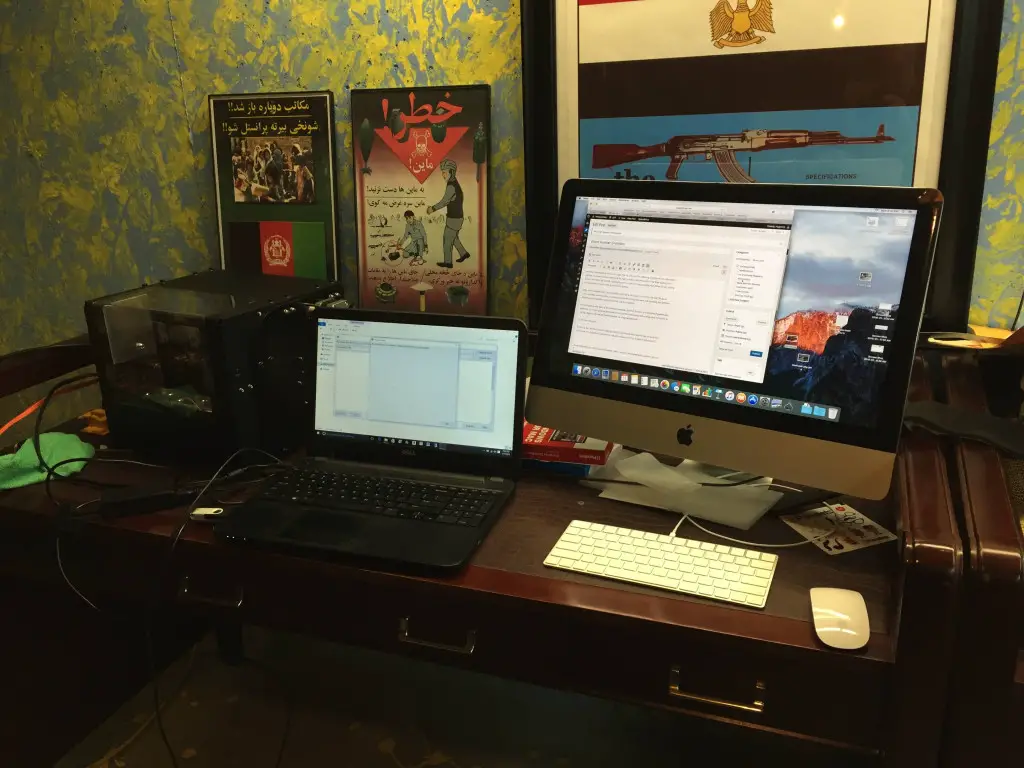
The WeaponsMan Ghost Gunner, early in its testing, hogs one of the gunsmithing benches with a Mac and a PC (we were checking that a connection problem was not emulation-related. It wasn’t, it was a driver issue).
Well, let’s just let Cody tell it, beginning with why:
A Short Note on the Passing of Scalia
The author of the Heller decision is dead, and the Supreme Court no longer maintains a majority to protect the Second Amendment. The Senate majority leader has signaled he will not schedule a vote on any Obama appointments to be made over the next 9-11 months, and the NRA will keep the heat on Congress and the 2016 candidates. But after the election, the fate of our 2A is in serious doubt.
There are now no ultimate authorities to hold together your Second Amendment. Recent decisions like Kolbe v. Hogan, or those coming like Mance or our own case Defense Distributed v. U.S. Dep’t of State, will be decided circuit by circuit. Keeping your battle rifle is now, more than ever, a local and do-it-yourself project. And it will require enormous work.
I’m personally asking for volunteers and more part or full-time employees to help us in our work at Defense Distributed. Do you know Node.js? Are you a mechanical engineer? Can you work in a major CAD suite? Please email me if you have the skills and time to offer for this fight, a fight for the future and the soul of the Second Amendment. We have only ourselves now. Please do not delay.
Cody R. Wilson
We have to say we’ve struggled with the GhostGunner, but that’s largely our own fault, in that we go weeks without time to mess with it, and then make great progress when we have a few hours.
Some of the guys at DefDist have been a great help to us (notably Haroon and Ben. Thanks, guys). We actually started cutting metal on it yesterday, then it threw a limit switch (see above). After that, it was plane-building session time (exit photo, left wing skeleton shapes up).
We’re really hoping to use the GhostGunner as a general purpose mill in order to, among other things, make stuff for airplanes. We’re least interested in its capability to run a canned AR-15 lower process.
In related news, the court case between the anti-gun US Department of State’s politically-staffed Department of Defense Trade Controls and Defense Distributed lurched forward a peg with a filing from State. Received via email from the National Shooting Sports Foundation, which is intensely interested in this and in several other export-restriction issues:
3-D Printed Gun Case Moves Forward
The U.S. Department of State has filed its response brief with the 5th Circuit Court of Appeals in the suit brought by Defense Distributed, which challenges the controls the department placed on the export of computer data files that would enable anyone with a 3-D printer to potentially produce an operable firearm.
In its filing, the department argues that a license is necessary because 3-D printers are available worldwide, and because the publication of the computer data files at issue would be tantamount to dissemination of the firearms themselves. The department asserts that the Arms Export Control Act confers it with great discretion to identify items, such as the “technical data” contained in the computer data files, that require a license to export and that it therefore acted within its authority to order the removal of Defense Distributed’s computer files from the Internet. Additional briefing in this case is expected.
State’s motivation, of course, is nothing of the sort; it’s purest anti-gun animus.
“Thank God, we’re saved, the diplomats of the State Department are on the job!” — said no one. Ever.
UPDATE
Cody’s own (widely-published) email address is [email protected]. We’re including it in response to requests in the comments.
Also, a great way to support Defense Distributed is to buy a GhostGunner.
Psychotronic Guns? Whaaat?
Back in 2012, a British tabloid reported that Russian strongman Vladimir Putin has ordered full steam ahead on the production of psychotronic guns. We started to write about it at the time, but never finished, and now we thought we’d revisit the psychotronic arsenal of Mother Russia.
Not just any pychotronic guns, mind you: mind-bending psychotronic guns.
Yeah, we said “whaa?” too, and we’re supposed to be the go-to gun guys. We just aren’t that up on guns that mess with people’s brains, other than by opening up their protective braincases and letting blood and stuff out, and lead and air in. That bit we can do, but the Russians are claiming to have some sort of weapon that messes with the mind, but leaves the organism intact. Or technically, the British journalists are claiming the Russians are claiming — eh. It gets kind of mind-bending.
Of course, the comparison to a certain Hollywood meme is inevitable:
Let’s see what the Daily Mail had to say:
Mind-bending ‘psychotronic’ guns that can effectively turn people into zombies have been given the go-ahead by Russian president Vladimir Putin.
The futuristic weapons – which will attack the central nervous system of their victims – are being developed by the country’s scientists.
They could be used against Russia’s enemies and, perhaps, its own dissidents by the end of the decade.
Sources in Moscow say Mr Putin has described the guns, which use electromagnetic radiation like that found in microwave ovens, as ‘entirely new instruments for achieving political and strategic goals’.
Mr Putin added: ‘Such high-tech weapons systems will be comparable in effect to nuclear weapons, but will be more acceptable in terms of political and military ideology.’
Plans to introduce the super- weapons were announced quietly last week by Russian defence minister Anatoly Serdyukov, fulfilling a little-noticed election campaign pledge by president-elect Putin.
Mr Serdyukov said: ‘The development of weaponry based on new physics principles – direct-energy weapons, geophysical weapons, wave-energy weapons, genetic weapons, psychotronic weapons, and so on – is part of the state arms procurement programme for 2011-2020.’
Specific proposals on developing the weapons are due to be drawn up before December by a new Defence Advanced Research Projects Agency.
Research into electromagnetic weapons has been secretly carried out in the US and Russia since the Fifties. But now it appears Mr Putin has stolen a march on the Americans. Precise details of the Russian gun have not been revealed. However, previous research has shown that low-frequency waves or beams can affect brain cells, alter psychological states and make it possible to transmit suggestions and commands directly into someone’s thought processes.
High doses of microwaves can damage the functioning of internal organs, control behaviour or even drive victims to suicide. Anatoly Tsyganok, head of the Military Forecasting Centre in Moscow, said: ‘This is a highly serious weapon.
‘When it was used for dispersing a crowd and it was focused on a man, his body temperature went up immediately as if he was thrown into a hot frying pan. Still, we know very little about this weapon and even special forces guys can hardly cope with it.’
The long-term effects are not known, but two years ago a former major in the Russian foreign intelligence agency, the GRU, died in Scotland after making claims about such a weapons programme to MI6.
Sergei Serykh, 43, claimed he was a victim of weapons which he said were ‘many times more powerful than in the Matrix films’.
Mr Serykh died after falling from a Glasgow tower block with his wife and stepson in March 2010. While his death was assumed to be suicide, his family fear there was foul play.
Last night the Ministry of Defence declined to comment.
via Putin targets foes with ‘zombie’ gun which attack victims’ central nervous system | Mail Online.
This actually sounds somewhat derivative of US research, as is the Russian establishment of a DARPA, imitation being the sincerest, etc. The US has developed a variety of weapons that have CNS effects but has aimed our research more at making riot-control and nonlethal weapons of that sort.
They’re not all that new. A Doktor Inginieur Wallauschek supposedly developed a devastating sound weapon for the Nazis, with which they won the… oh. Never mind.
Actually weaponizing and deploying these weapons has proven to be somewhat difficult. For one thing, they’re not highly directional or precision guided. (The stuff in our safe that can affect your brain is quite to the contrary, to about 1/4 MOA at best). A psychotronic weapon that couldn’t be aimed would also zombify its own operators… which could make it kind of hard to turn off once you got it going. (That was actually one problem with Wallauschek’s weapon that killed by sound. Despite its directionality, it affected anyone near it, making it kind of hard to train on any moving target).
The US has deployed some of these weapons systems overseas but has been unable to come up with good situations and targets, and so has never used them. The Long Range Acoustical Device is one example.
So we thought, the Russians are some smart Ivans, if they’ve been working on this since 2012, surely there’s been something reported in the four years since. But a Google search found us only the pack journalists of 2012, plus these two stories:
- Psychotronic and Electromagnetic Weapons: Remote Control of the Human Nervous System, on the Canadian conspiracy buff website globalresearch.ca, published 31 Jan 13, recounts stories by people suing various governments because the psychotronic waves are affecting their brains, or something.
-
Russia’s New Psychotronic Gun, Turning People Into Zombies – Literally looks like a new story, from 22 Feb 15, at a website that says it’s “unfiltered.” It’s this unfiltered: it’s completely plagiarized from the Daily Mail story.
Tentative conclusion: Vladimir Vladimirovich is not going to turn us into zombies any time soon.
Bonus: search for “psychotronic” anything, and Google serves you ads for quack products and nostrums to save you from the brain waves.
Fortunately, the well-shielded egg heads of MIT are all over it. (Bonus Video).
Washbear 3D Printed Revolver Update
Back in September, we introduced the Washbear, the first successful 3D printed .22 revolver (although it looks like a pepperbox, it has a rudimentary barrel), and we promised you more information, including the files, when it was time.
It’s time.
James R. Patrick has continued to develop theWashbear and he now has it working even better. In addition, the files are available. This is his rendering of the current version:
It is all 3D printed, except for one roofing nail (firing pin), one elastic band (mainspring), and a grip-enclosed steel mass if one must meet the requirements of the United States’ Undetectable Firearms Act.
This video is a design analysis by Patrick himself, followed by a brief video of a shooting session of a version printed by FP (FreedomPrint) of the FOSSCAD group. There are two separate cylinder designs: a eight-shot cylinder, with steel liners, for printing in ABS filament; and an six-shot cylinder that requires no liners if printed in nylon filament. The cylinders are interchangeable. There’s no reason you couldn’t print a nylon, lined, 8-shot cylinder, too, for increased strength.
It is designed with more attention to safety than to perfect function at this point. The clever mechanism rotates the cylinder half-way on trigger release, so that the DAO trigger only has to move the cylinder half-way — but also so that the firing pin rests on the cylinder between chambers, in between shots, rendering the firearm drop-safe. (We would suggest making a notch in the cylinder’s rear face to receive this firing pin, locking the cylinder between shots and ensuring the cylinder can’t be torqued sideways and initiate an out-of-battery fire, for added safety. That would not be a factor in a center fire version, which would probably require materials advances). James Patrick notes that the current mechanism leads to a suboptimal trigger press.
Well, it’s early days.
Again, back in September, we promised you the files when James was ready to release them. He released them this past weekend. You can download the zipfile from Sendspace here. Follow that link and click on the blue button:
https://www.sendspace.com/file/kgn4xq
Note that James’s own website remains blocked by some antivirus software. Should you not be under that handicap, it’s here:
http://www.jamesrpatrick.com/
Are we still the best place to get technical firearms news on the web, or what (they said modestly)?
Source Document: FBI Pistol Solicitation
 Gents, you saw it here first. The complete FBI new pistol solicitation, which we mentioned back on 7 November, is now available verbatim and in full detail.
Gents, you saw it here first. The complete FBI new pistol solicitation, which we mentioned back on 7 November, is now available verbatim and in full detail.
Have at it:
FBI Pistol Solicitation Bid, Oct 2015.pdf
Don’t say we never gave you nothin’.
We’re impressed by the thoroughness of the document. For example, it gets into the weeds on just about every facet of the firearm’s design. It goes so far as to suggest the color of magazine followers, and the design of floorplates:
Not only must all mags have a “toe” on the floorplate (as shown in Fig. 1) to aid extraction, but magazines for the Inert (red) training pistol and Simunitions (blue) force-on-force training pistol must have color-coordinated floorplates.
As previously reported, the FBI knows what it wants in terms of safety, or at least a safety: none. No safety catch, no decocking lever, no grip safety, no magazine safety, no way to cock the pistol except by manipulating the trigger. Sounds like it’s right up Glock’s alley, except, as our previous report noted, no finger grooves.
For a government solicitation,the FBI’s is quite legible. As we said, have at it.
What to Make of Paris so far (not much), and of Status-6
 We’re not going to bite at analyzing the Paris attack while it’s still not all wrapped up. Unlike the guys whose output is already set for tomorrow’s newsstand (image right), we are not under a deadline on this. We’ll just offer several points and move on to news from Russia.
We’re not going to bite at analyzing the Paris attack while it’s still not all wrapped up. Unlike the guys whose output is already set for tomorrow’s newsstand (image right), we are not under a deadline on this. We’ll just offer several points and move on to news from Russia.
- Initial media reports are almost always wrong. This has been ameliorated somewhat by the press’s discovery that they can pluck stuff off twitter, instead of from the twits on their staff. Some press don’t get that — NBC, for instance, had Bryant Gumbel all concerned about the fate of Al Gore’s Who Wants Me To Be A Bigger Billionaire telethon. (Gore fans, relax; ManBearPig lives).
- Initial body counts are almost always high. This attack seems rather poorly synchronized and disorganized compared to the record holder among these small arms attacks, the one in Bombay. Ergo, this attack is probably not going to break Bombay’s record body count (160).
- The attack is visibly and obviously another amish attack mohammedan sacrament. As a GEICO ad might say, if you’re an imam you incite murder, that’s what you do. That means tomorrow you can expect stern warnings about the coming backlash against peaceable Muslims. These backlashes are always descending, but they never seem to take tangible form — they’re vaporware. Kind of like peaceable Muslims.
- We’ve already seen the usual politicians unleash their Platitude Generators, Crises For Use in, Mark VII, talking about “our shared values.” Know who doesn’t share those values? If you guessed the schmos with AKs and the splodydopes in guncotton waistcoats, give yourself a cookie.
And that’s all we’re going to say about it, right now.
Meanwhile, in Sochi, Russian Federation….
Because something really interesting happened in Russia this week. A “leak” showed a classified briefing slide about a previously unannounced underwater-launched weapon. The “leak” has been extensively promoted on government-controlled news site Russia Today (rt.com).
That’s a leak? On a state-controlled broadcast?
The slide describes a stealthy, 1.6-meter diameter, long-ranged torpedo which carries a ~5-20 megaton nuclear and radiological warhead, designed to persistently irradiate entire regions of a coastal target nation. In fact, Status-6 has a claimed autonomous range of over 10,000 kilometers, which really puts it more into the class of an autonomous undersea vehicle — if it’s real.
According to the slide it can be carried by two new Russian sub types, which just saw themselves elevated on free world target lists. The warhead is supposedly capable of both nuclear destruction and of persistently irradiating an entire enemy coastline, suggesting a dirty bomb or cobalt bomb. The US and USSR agreed in principle during the initial 1970s talks for the first Strategic Arms Limitation Treaty not to deploy such doomsday weapons, but they never wrote that into the agreement, and the treaty has lapsed.
It turns out, Bill Gertz wrote this program up based on a Pentagon leak to him two months ago, noting that the DOD had code-named the Russian port-buster Kanyon.
Russia is building a drone submarine to deliver large-scale nuclear weapons against U.S. harbors and coastal cities, according to Pentagon officials.
The developmental unmanned underwater vehicle, or UUV, when deployed, will be equipped with megaton-class warheads capable of blowing up key ports used by U.S. nuclear missile submarines, such as Kings Bay, Ga., and Puget Sound in Washington state.
The US has dismantled all of its multi-megaton warheads as part of the Obama Administration’s program of unilateral nuclear disarmament. It retains a small stockpile of 1.2 megaton B83 bombs, but those too are scheduled to be decommissioned.
In the Soviet era, a torpedo called T-15 could deliver a megaton warhead to a harbor. All such torpedoes are believed to have been decommissioned, but Status/Kanyon is a more capable, modern update of this old Soviet concept — if it is real. Gertz notes that, despite indicators of coastal mapping by Russian AGI vessels, deployment of a strike UUV is probably years away.
Using such a warhead against a civilian target is arguably a violation of international law, but that doesn’t seem to faze the Russian leadership. If the warhead even exists. If the torpedo or AUV really exists. Because a propaganda leak is equally effective if the “secret weapon” is real, or if it is notional.
Of course, if it was a leak, and this is something real, the guy responsible is probably going to be a test pilot on one of these torpedoes. Hals und beinbruch, Ivan.
Why the “Leak”?
This “leak” appears from here clearly as a brush-back pitch thrown at the United States and its allies. Yet it seems likely to be counterproductive, if that is really its intent. It would raise the stakes of antisubmarine warfare, a much neglected field in the shrinking US Navy, and inspire countermeasures that Russia really, really wouldn’t like.
But we’re probably looking at it the wrong way. That’s not leaked for our benefit. Its target audience is, in our estimation, inside Russia. The message is: we are strong, we are invincible, nobody had better mess with us. It is a bluff, yes, but he’s bluffing his own people, not the Americans.
For Some Good Information
In addition to Bill Gertz’s column mentioned above, read Jeffrey Lewis’s posts at Arms Control Wonk:
Don’t neglect the comments. He has some astute and technically proficient commenters.
He also wrote a column in Foreign Policy that transcended the usual soporific house style:
At the risk of understating things, this project is bat-shit crazy. It harkens back to the most absurd moments of the Cold War, when nuclear strategists followed the logic of deterrence over the cliff and into the abyss. For his part, Putin seems positively nostalgic.
What sort of sick bastards dream up this kind of weapon? Whether or not the Russians ever build it is almost beside the point. Simply announcing to the world that you find this to be a reasonable approach to deterrence should be enough to mark you out as a dangerous creep.
Of course, then Lewis makes his own bat-guano-crazy argument, that rather than develop a military response to this thing, or (giving him the benefit of the doubt), in parallel to the military response, we need to “think about making better use of international norms against nuclear weapons.” Yes, because Vladimir Vladimirovich is as impressed with “international norms” as his role model Josef Vissarionovich was with the Pope.
“The Soldier got a good cheek weld on the soft, warm fur of the stock.”
 Science fiction? Right now it is, but it’s now science fact that it’s possible to add integral hair to 3D-printed items. Scientists at Carnegie Mellon University illustrated this using the most common form of plastic 3D printing, fused deposition modeling (also called Fused Filament Fabrication by some vendors).
Science fiction? Right now it is, but it’s now science fact that it’s possible to add integral hair to 3D-printed items. Scientists at Carnegie Mellon University illustrated this using the most common form of plastic 3D printing, fused deposition modeling (also called Fused Filament Fabrication by some vendors).
They can make short, thick, rigid bristles, or soft, downy hair. The result makes hairs, fibers or bristles that taper naturally, almost organically, to a point. They write:
In this work, we introduce a technique for 3D printing soft strands, fibers, and bristles (Figure 1), using conventional fused deposition modeling (FDM). Our work was inspired by the peculiar phenomenon that occurs during the opera- tion of a handheld glue gun: when a person extrudes hot glue material and moves the gun away, a “string” of residue often forms unintentionally (Figure 2). The shape, length, and thickness of the resulting stringy material varies based on how much glue was extruded and how fast the user moves away from the extrusion point. This artifact often annoys users, but in this work, we exploit the phenomenon.
The scientists, Gierad Laput, Xiang ‘Anthony’ Chen, and Chris Harrison came at the problem from a human-computer interaction background and approach (they all work at CMU’s Human-Computer Interaction Institute).
They did not use a high-end printer, but achieved their results with a Printrbot Simple, a ~$350 kit printer. They found that one way or another they could control the density, length, thickness, color, and distribution of the hairs or fibers. The hairs are also amenable to many kinds of post-processing. For the best results, they extrude the hairs horizontally, in the X or Y axis.
You can easily imagine some potential future developments, like a bespoke “hair” extruder that would lay down an array of hairs at once. Laput, Chen and Harrison have demonstrated the concept; now it’s up to the rest of the world to reduce it to practical applications.
Like a fur-bearing rifle stock. That’s perfectly and individually sculpted to your cheek weld.
They have also named the process: furbrication. Perfect!
The pre-publication paper (it is to be presented at a conference this month) is here on Laput’s server. Hat tip, Caleb Garling at MIT Technology Review.
There are people who are not in the gun culture that think we are too attached to our firearms now. What’s going to happen when our guns are as soft and warm as a cuddly bunny?
Cyber Gun Aimed at Low-Information Generals
This image comes to you from the US Cyber Command’s booth at the AUSA convention, basically like SHOT show for the Army, complete with a keyword where the Chief of Staff sets the tone and introduces the buzzwords for the next year.
Wuzzzat he’s holding? A phased pulse rifle in the 40-megawatt range? Not exactly. This year, the Chief’s thunder has been stolen by that futuristic gadget, the Cyber Rifle. It’s a promotional gimmick from — who else? — the Army Cyber Institute at West Point. Appropriately enough it has been promoted by tweet.
It can open doors!
ACI demos low-cost, rapid-build cyber rifle in stealthy breach of bunker w/ automated light & lock #AUSA2015 @ARCYBER pic.twitter.com/UyOxafXG1O
— Army Cyber Institute (@ArmyCyberInst) October 12, 2015
And zap drones! (If the Army gig doesn’t work out, they could sell this thing to every celebrity wedding planner from Malibu to Montauk).
ACI uses a field expedient cyber tool to disable an enemy mobile observation post (quadcopter) @AUSAorg @ARCYBER pic.twitter.com/zl1m3hELQl
— Army Cyber Institute (@ArmyCyberInst) October 12, 2015
The Cyber Gun isn’t a real weapon, although as you can see from the close-up, it’s built on AR-15 receivers. It’s more of a technology demonstrator, but even more than that, it’s a capabilities briefing in memorable, physical form. Captain Brent Chapman (the grinning fellow wielding the “rifle” in the “bunker lights and door” video) built it from COTS components, including a Raspberry Pi1, Wi-Fi module2, Kali Linux3, and Yagi antenna4 (since those may be terra incognita to some of our more firearm-oriented readers, there are definitions in the notes). It cost $150 to buy the parts, and 10 hours to build and test the Cyber Rifle.
Captain Chapman wasn’t entirely breaking new ground here. A very similar rig, made for mobile penetration testing, is in this 2013 blog post. Of course, it doesn’t look like a rifle.
So why does the Cyber Rifle, which is really a simple computer running some hacking tools with an antenna, look like a rifle?
Well, we mentioned how the Chief of Staff uses his speech to give impetus to ethe Army’s newest, shiniest buzzwords. No buzzword is shinier, now, than cyber. The Army has created a Cyber Branch (it took 35 years for SF to get a branch, but we didn’t offer the possibility of non-fighting slots for Academy grads that incline that way), and has selected its initial cadre of officers and NCOs. And here’s how we know that cyber’s a big deal with this Chief of Staff:
That’s the new boss, Mark Milley, in the Army Blue uniform, an outfit that looks like it’s on loan from the guards at Lenin’s Tomb. (He’s got a lot of sparkly baubles. Which one is the Hero of Socialist Labor?). Gen. Milley looks a bit bemused by the whole thing, but cyber is big with Big Green (source).
One of the many stories written about the Cyber Rifle in the last few days hints at the reason:
All of the tech was placed onto the rifle frame, making it easier for senior military leaders to appreciate.
“Easier for senior leaders to appreciate…” gee, that sounds a lot like “Generals are thick, make it look like a rifle or they’ll never understand how a computer can be an offensive weapon.”
But they wouldn’t really say that, would they?
Well, here’s another story with a quote from Capt. Brent Chapman:
The rifle shape, meanwhile, is mostly for kicks. ” By putting all of this stuff on the rifle frame, it also makes it very easy for senior leaders to consume,” Chapman says. “Aim. Shoot. Crash. “
In a last-ditch defense of Capt. Chapman’s career, he said that before General Milley visited his display; the Chief of Staff didn’t inspire the statement.
As far as we know.
Notes
- A low-cost single-board computer made originally to promote programming education to kids. Same idea (single-board comp) as Arduino, but oriented to programming, not sensing and control of physical stuff.
- This is the same circuit that’s in your phone and computer for getting on your WiFi network. It’s available in various forms, a USB dongle is usually used with Raspberry Pi and other small circuit boards. To support the Yagi, you need a dongle that supports an external antenna.
- Probably best explained by Adafruit:
Kali Linux is a distribution especially aimed at penetration testing and network security applications. (It’s a successor to Backtrack Linux.) Kali isn’t intended as a general-purpose desktop OS for end users. Instead, it’s a collection of useful tools for monitoring, exploring, and attacking networks. It comes out of the box with tools like Wireshark, nmap, and Aircrack-ng, and is particularly useful in situations where you just want a disposable machine/installation with some network tools.
This is the software that runs on the computer, it includes the operating system and integrated hacking tools. - A Yagi is a highly directional antenna array that works best for a narrow frequency range (or a single frequency). In fact, if you’re of a certain age, you’ve seen or owned one: the traditional TV antenna. The Yagi has a long axis, which is structural, not electronic; it is crossed by orthogonal elements, one of which is the actual transmitting element (or driven element, a dipole), one of which (behind the dipole) is a reflector, the remainder of which are towards the direction of transmission (or direction of the transmitter, for a receiving antenna) and are called directors.
The thing on the nose end of the Cyber Rifle that looks like the rostrum of a sawfish? That’s the yagi, and the black nubs are the elements — the rearmost one is the reflector, the one just before it is the driven element — the only one wired to the transmitter — and all the ones forward of that are directors. WiFi is a perfect application for a Yagi because of the known, fixed frequency. (It would also be an antenna you’d consider for GPS meaconing, for the same reason).
Fun fact: The Yagi wasn’t invented by Yagi, a Todai professor. It was invented, mostly, by his colleague Uda. But Yagi wound up with the credit. Make of that what you will.
“Impossible” Alloys of the Near Future
Steel-Aluminum alloy? Any metallurgist would tag you as a n00b for bringing it up. “Can’t do it. Incompatible. It’s the metallurgical equivalent of dogs and cats lying down together. Winds up with crystallized, embrittled aluminum weakening the steel.” Three Korean scientists, all stereotypically named Kim, from the Pohang University of Science and Technology have almost managed to pull it off — after many years of theory, trial, and error, and standing on the shoulders of previous researchers, as always. The lead investigator is Hansoo Kim.
The resulting material has properties that sound like Ayn Rand’s fictional Rearden Metal — light, strong, potentially cheap. It exceeds titanium alloys, hitherto the lightest and strongest alloys known, for lightness and strength. Yet the aluminum that lightens the alloy doesn’t embrittle it — it leaves it ductile, or workable. That’s why this research has potential outside of the metallurgist’s lab.
The secret appears to be accepting that Fe-Al “intermetallic compound” inclusions (they call this compound B2) within the metal will be somewhat brittle, and managing their size and dispersion so that they lighten the resulting steel without embrittling it. They did this by adding nickel, which “catalyses the precipitation of nanometre-sized B2 particles in the face-centred cubic matrix of high-aluminium low-density steel during heat treatment of cold-rolled sheet steel.” In much the way that windows don’t break and make a skyscraper fall because they’re not load-bearing structures, these fracture-prone B2 particles are individually so small and so widely and evenly dispersed that a crack has no pathway to propagate. Think of it as rip-stop steel at the nanometer scale.
This work is evolutionary as much as it is revolutionary. It builds on previous work on TRIPLEX steels, which are steels with significant amounts of manganese, aluminum and carbon serving to modify iron’s physical properties (and that in turn builds on 1970s research in the USSR). Previous TRIPLEX research by Springer and Raabe (details linked below) found that while holding manganese and carbon content constant at 30% and 1.2% respectively, strength went up as up to 8% aluminum displaced some of the iron in the balance.
Springer and Raabe, and others, built on Soviet work that developed high-strength but very brittle iron-aluminum steels.
How can a material be strong and brittle? They’re separate properties. Strong suggests how far you have to go to make the metal fail. Brittle suggests a material that then fails abruptly by breaking. It doesn’t deform. (Imagine a car that, crashed into a tree, shattered into shards rather than got dented). But that’s not just a problem for designers: it’s a hell of a problem for manufacturers, for many of our steel-processing approaches expect steel to be ductile. We bend it on anvils or stamp it in dies; we shear it with cutting tools; we curve pipes around; we hydroform it. All of those processes depend on the ductility of the metal.
The tables and graphs in the paper in Nature (one of the two most prestigious peer-reviewed journals in the world) suggests that this novel aluminum-bearing steel alloy not only has superior balance of strength and ductility to TRIPLEX, but also offers real ductility advantages over typical titanium-aluminum-vanadium alloy. (If you’ve ever worked with titanium, you know ductility is not its strong point).
What do alloys like this mean for firearms? The three Dr Kims are excited about automotive and aviation applications, because those are the primary users of large quantities of lightweight alloys (and have been turning increasingly to more exotic materials, like carbon fiber, carbon-carbon, and lithium alloys, in pursuit of lighter strong materials). But the technology that shows up on the auto line and in the aerospace factory does make it to firearms, especially as every firearms designer now alive is alert to how 1940s aviation technology enabled Stoner, Sullivan et. al. to revolutionize firearms design in the 1950s and early 60s. If nobody in your engineering shop is getting SAE’s Aerospace Engineering, you’re either committed to traditional materials and processes, or a me-too design shop.
While the material itself is of great interest, the scientists think that the process will be, in the long run, far more important because it will allow the invention of entire classes of previously “impossible” alloys.
The process has one major hurdle before it can be commercialized: a method must be found to prevent the oxidation of the steel, in-process. Technologies used on conventional steels won’t work, and building the foundry on an airless asteroid solves the oxidation problem, but leaves you with the steel somewhere other than the planet where it’s required.
And right about now, perhaps in some unexpected corner of the world, a grad student is mulling this problem, and sometime soon a light will go on in his head….
For more information
Popular Mechanics article for laymen: http://www.popularmechanics.com/technology/news/a13919/new-steel-alloy-titanium/?1443670416676=1
Nature article (abstract, references and tables only w/o subscription): http://www.nature.com/nature/journal/v518/n7537/full/nature14144.html
Information on TRIPLEX steel-AL alloys (Forerunner of this research): http://www.dierk-raabe.com/triplex-steels/
Inside the T-14 Armata
People have been wondering exactly how the crew is laid out and works together in the new Russian T-14 Armata tank. Here is an answer, as what appears to be a pick-up crew (test crew? journalists?) sets up and fires the Armata’s main armament. Some comments after the brief video.
They’re going to have to go a lot faster than this in combat, but see comments on the crew above the video. A well-drilled crew, comfortable with live-firing the tank, should slam through this. These guys are leisurely, relaxed. “Ogon?” (Fire). (pause) “Ogon!” (pause). FOOM. Those pauses go away with practice.
The high level of automation in the Armata is evident here. It’s a well-thought out tank, and with the whole crew in the same can, crew coordination is simplified. In the flight-training world, there’s a general consensus that it’s easier and more effective to teach in a side-by-side environment. Curtis LeMay himself threw a wobbler when Boeing prepared a jet for him (the XB-52) with a tandem crew as in the previous jet (B-47), and he made Boeing change it for the production jets. Putting the TC, gunner and driver side-by-side has the same benefits in a tank that it does in a jet bomber.
We’re a little concerned about the idea of touch screens in a combat vehicle. Again in aviation, we’ve discovered that two things are problems with touch-screens in aircraft. In turbulent conditions, it can be hard to hit the button you want. And worse, it’s possible to hit a button you don’t want. Now, this is not an insuperable problem. The avionics makers have worked out some solutions and/or work-arounds, including backup manual knobs, user-controllable delays on keys (i.e. you have to hold it for a half-second to activate it), and even environmentally adaptive delays (the delay increases if the accelerometers in the Air Data and Altitude/Heading Reference System see accelerations characteristic of turbulence). So if they can solve it for an airplane moving at hundreds of kilometers an hour through three-dimensionally through a moving, changing medium, the Russians can solve it for a tank juddering over the ground at a max of dozens of K and taking the occasional hit.
The touch screens of the Armata look like COTS computers running application, not a bespoke interface. This has both pros and cons, something the Russian engineers certainly understand.
Tanks normally operate best opened up and lose considerable situational awareness when combat forces them to button up. NATO tankers in particular like to fight their tanks from open cupola. But the Armata seems designed to give its TC best situational awareness when he’s reclining in his couch, not head up out of the turret. This is in keeping with Russian/Soviet tank doctrine that expects tanks to operate on a battlefield swept not only by small arms, tank, and mortar and indirect fire, but also by billowing clouds of chemical and biological weapons. In that environment, the TC in an climate-controlled compartment with the rest of his crew is miles ahead of the guy who might be out of his turret, but sweating in a MOPP4 suit and squinting through a gas mask, or in any US tank where NBC protection is an afterthought.
Finally, this is a tank that exists in platoon or maybe company strength. It’s still a test article. It could evolve in other directions. The Russians are not going to send these to their sheep-dipped units in eastern Ukraine, let alone their “USA is nutless, so we might as well” expeditionary force in Syria. When they do sell them to allies that might use them in combat — probably, Iran, and probably, soon, because they want foreign sales to subsidize Russian Army production — the allies will not get the full version. Of course, a tank that is so very dependent on software makes the production of what Soviet guys back in the day used to call their “monkey model” for export relatively easy.
It also enables a couple of logistic things that haven’t been done quite this way before. For example, Russian Army tanks could be very quickly reconfigured and flown to an ally in extremis, as the USA did with Israel in 1973, and also, Russian crews could be rapidly airlifted and fall in on an ally’s monkey-model tanks, flashing them to full Russian Army standard with a firmware upgrade. This would be an improvement on the US’s Cold War REFORGER prepositioned unit sets, by getting the allies to store, maintain and exercise the unit sets unless and until Ivan needs them.
Even if this tank is never produced in more than limited quantities, it is a revolutionary tank that must be taken seriously. We expect to see some of these concepts influencing future Western developments.

Kevin was a former Special Forces weapons man (MOS 18B, before the 18 series, 11B with Skill Qualification Indicator of S). His focus was on weapons: their history, effects and employment. He started WeaponsMan.com in 2011 and operated it until he passed away in 2017. His work is being preserved here at the request of his family.

